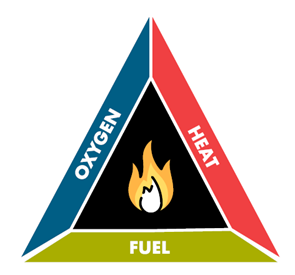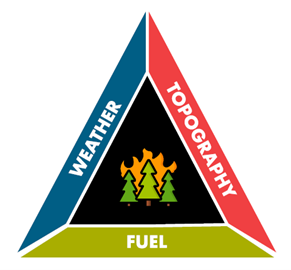News
Wildfire Safety & Awareness
Frank Archuleta, WTS Risk Fire Mitigation Manager
In 2020, wildfires have ravaged millions of acres across the Western United States, including over four million acres in California alone. Hot, dry, windy conditions, ideal for wildfire ignition and spread came early to many areas this year and have persisted into the fall. During these times of extreme fire danger, it is important that managers and work crews have the training and tools necessary to work safely on emergency clean up and routine maintenance work.
As in all other aspects of utility line clearance work, situational awareness is one of the keys to safety when dealing with wildfire hazards. Maintaining an awareness of current and changing conditions and surroundings and modifying work activities and behavior accordingly is what keeps employees safe.
In addition to maintaining situational awareness, it is important that employees working in these areas have the tools and training to identify and mitigate hazards, and to understand that some situations may occur in which there is no way to work safely.
Working safely in areas with elevated fire danger begins with understanding the potential for a wildfire ignition to occur, and the potential for spread and growth after and ignition has occurred.
Wildfire ignition is based on the wildfire ignition triangle.

HEAT, FUEL AND OXYGEN
These are the three elements that are necessary for a fire to occur.
Ignition sources (heat producing items) include things such as hot mufflers, utility power lines and sparks thrown by chainsaws.
Fuel sources are normally dry vegetation but can include anything dry enough to catch on fire including trash that has built up on the job site.
Identifying and separating ignition sources from fuel sources is the key to preventing accidental wildfire ignitions.
It is important to remember that most wildfire ignitions (around 85%) have human-related causes. This can be a carelessly thrown cigarette, a downed power line or dragging trailer safety chains that are throwing off sparks. We must be as alert for wildfire ignitions that have non-WTS related causes, as we are for those that may be started by employees during daily activities!
Wildfire spread after ignition is based on the wildfire behavior triangle.

FUEL, WEATHER AND TOPOGRAPHY
These are the elements that determine how a fire will behave after an ignition takes place: Fuels are the same as in the fire ignition triangle.
WEATHER; WIND, RELATIVE HUMIDITY AND TEMPERATURE
Wind is the greatest factor affecting wildfire spread. Strong dry winds can push a fire, dry out surrounding fuels and serve as an oxygen supply.
Relative humidity and temperature: The hotter and dryer it gets, the easier a fire can start and spread.
Terrain issues include steep slopes and narrow canyons. A 10 degree increase in slope can lead to a doubling in the rate of spread of a fire. Steep terrain makes it difficult for crews to use escape routes to quickly flee from a fire. Narrow canyons can act like chimneys and channel heat that can lead to rapid fire spread.
Identifying and documenting these conditions, identifying and mitigating ignition and fuel sources and having the tools to suppress any accidental wildfire ignitions as quickly as possible are what keeps crews safe while performing any kind of work in areas with elevated fire danger, allowing them to complete their essential roles.
The WSC Wildfire Safety and Prevention Plan is designed to give managers and employees the tools and understanding to work safely and prevent accidental wildfire ignitions in areas with elevated fire danger. Understanding and documenting the elements that make up the two fire triangles helps give us the necessary situational awareness to work safely in areas with elevated fire danger.
THE PROGRAM HAS THREE PARTS:
The WSC Wildfire Safety and Prevention Plan
The wildfire safety and plan documents the goals of the program, the steps necessary to ensure job site safety and serves as a reference guide for employees and managers.
Fire Briefing
The fire briefing helps crews stay safe by documenting job site wildfire conditions, ignitions and fuel sources, and the necessary fire tools needed onsite.
Wildfire Training
Wildfire safety is ultimately based on identifying, documenting and mitigating the job site conditions that can lead to and affect job site wildfires, as well as having the proper tools and training to suppress any accidental wildfire ignitions that may occur. Training managers and crews to understand wildfire hazards helps keeps employees safe while working in areas with elevated fire danger, and allows them to complete their essential tasks.

